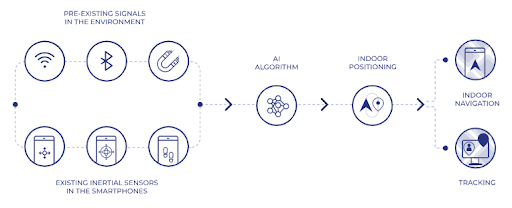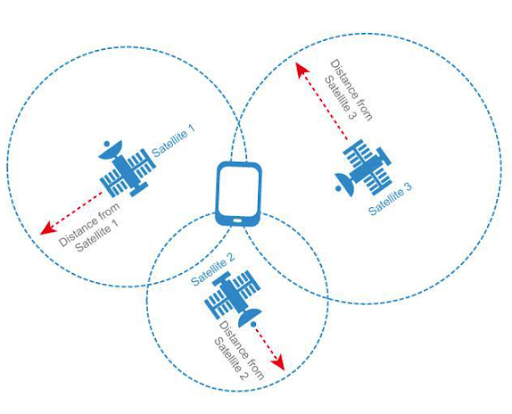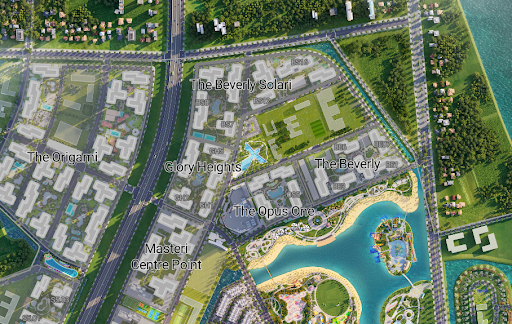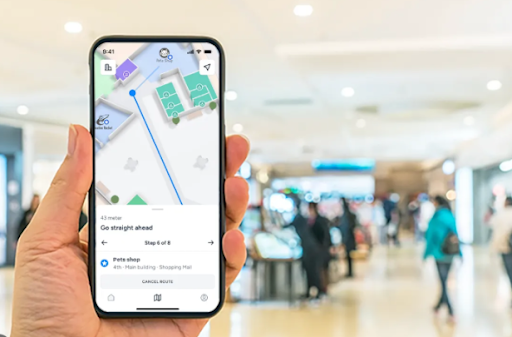Indoor Mapping and Positioning: Applications and Benefits for Businesses
1. Introduction
While outdoor digital maps have become common, indoor mapping and positioning are increasingly establishing important roles in many fields such as commerce, asset management, security, and business operations. This technology helps accurately display locations and provide navigation in enclosed spaces such as shopping centers, hospitals, airports, factories, and office buildings.

2. Applications of Indoor Mapping and Positioning
2.1. Navigation Support and Customer Experience
- Provides detailed digital maps to help customers easily find desired locations in shopping centers, airports, or exhibition areas.
- Supports indoor navigation, helping users find the quickest route to stores, meeting rooms, or boarding gates.
- Applies AR technology to display visual guidance directly on mobile phone screens.
2.2. Employee Location Management and Smart Attendance
- Locates employees in large buildings, helping managers know who is working where.
- Automates attendance based on actual location, preventing fraud and optimizing personnel management processes.
- Supports tracking movement routes in production areas or warehouses, helping optimize workflows.
2.3. Asset Monitoring and Management
- Tracks the location of medical equipment in hospitals, forklifts in warehouses, or machinery in factories.
- Alerts when assets are moved outside permitted areas, minimizing losses and improving maintenance efficiency.
- Integrates with IoT to display equipment operational status on digital maps.
2.4. Optimization of Factory and Warehouse Operations
- Supports warehouse management by displaying the exact location of each package, helping staff find items faster.
- Tracks and optimizes internal transportation routes, reducing unnecessary movement time.
- Integrates with Manufacturing Execution Systems (MES) to provide real-time data on work progress.
2.5. Enhanced Security and Access Control
- Accurately locates security cameras in buildings, helping security personnel monitor more effectively.
- Controls access by location, allowing or restricting employee entry to critical areas.
- Supports emergency evacuation by guiding to the nearest exit through mobile applications.
3. Indoor Positioning Technologies
3.1. WiFi Positioning
- Description: Uses signals from WiFi access points to determine user location.
- Advantages: No additional hardware deployment needed if WiFi systems are already in place.
- Disadvantages: Low accuracy (about 5-15 meters), dependent on the number of WiFi access points.
- Cost: Low, leverages existing WiFi infrastructure.
- Suitable applications: Shopping centers, airports, office buildings.
3.2. Bluetooth Positioning (BLE)
- Description: Uses Bluetooth beacons placed in spaces to broadcast signals and determine location.
- Advantages: Higher accuracy than WiFi (1-5 meters), relatively low deployment cost.
- Disadvantages: Requires installation and maintenance of beacons, limited battery life.
- Cost: Medium, due to the need to purchase and maintain beacons.
- Suitable applications: Hospitals, warehouses, shopping centers.
3.3. Magnetic Field Positioning
- Description: Analyzes natural magnetic field disturbances in indoor environments to determine device location.
- Advantages: No separate hardware deployment needed, only uses magnetic sensors on phones.
- Disadvantages: Accuracy can be affected by building materials and electronic devices.
- Cost: Low, software-only solution.
- Suitable applications: Mobile applications in shopping centers, museums.
3.4. Ultra-Wideband (UWB) Positioning
- Description: Uses ultra-wideband radio waves to measure precise distances between UWB devices.
- Advantages: Very high accuracy (under 30 cm), capable of working well in environments with many obstacles.
- Disadvantages: High cost, requires UWB-supported devices.
- Cost: High, requires specialized hardware.
- Suitable applications: Warehouses, manufacturing, logistics, tracking high-value assets.
3.5. LiDAR Positioning
- Description: Uses laser scanning sensors to create detailed 3D maps and determine object positions indoors.
- Advantages: High accuracy, suitable for highly complex environments.
- Disadvantages: Very high cost, requires specialized equipment.
- Cost: Very high, mainly used in specialized applications.
- Suitable applications: Autonomous robots, self-driving vehicles, detailed digital maps for complex facilities.

4. Conclusion
Indoor mapping and positioning provide many benefits in asset management, business operations, and enhancing customer experience. Each positioning technology has its own advantages and disadvantages, and businesses need to choose solutions that fit their specific needs. For specialized problems, building a customized indoor mapping system will help optimize operational efficiency, enhance competitive capacity, and maximize the potential of positioning technology in enclosed environments.


